There’s no denying that energy and mineral extraction have been and will continue to be important across the North for a long time. Mining and energy-related industries provide direct and indirect employment for thousands of people, taxes and other revenues. Our need is for science, engineering, and scholarly research; to develop safe, effective, and affordable technologies; to protect, preserve, and restore the natural and human environment; and to record and communicate our history.
-
Article 1: Download Alaska Park Science: Volume 13, Issue 2
Download a print-friendly copy of Volume 13, Issue 2 of Alaska Park Science. Read more
-
Article 2: Nature and Resources
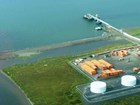
This issue of Alaska Park Science covers a lot of ground: land status, mining history, natural and cultural resource protection, reclamation, and hazard abatement. Our articles are drawn from Alaska where mining and oil extraction are generally separate activities, and Canada where oil sand operations involve both. Read more
-
Wrangell - St Elias National Park & Preserve
Article 3: Bob Reeve: Eastern Alaska’s Early Air Prospector, 1932-1938
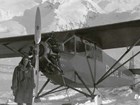
Bob Reeve is arguably one of Alaska’s most recognizable bush pilots. Although his independent airline pioneered commercial routes from Anchorage throughout the Alaska Peninsula and the Aleutian Chain between 1947 and 2000, the pilot is most known for his ability to land and take off from glaciers. This technique allowed him to play a huge role in Alaska's early mining industry, particularly in the region that became Wrangell-St Elias National Park and Preserve. Read more
-
Yukon - Charley Rivers National Preserve
Article 4: Fire vs Ice: Revolutionizing the Thawing Process at Coal Creek
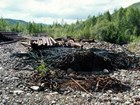
Gold mining is as much a part of the cultural and natural history of Alaska’s national parks as any other resource. In the enabling legislation of several Alaska park areas, gold mining is identified as one of the reasons that Congress deemed these areas worthy of protection. Read more
-
Article 5: Land Ownership in National Park System Units in Alaska and Possibilities for Mining and Other Developments
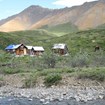
There are over 54 million acres of National Park System units in Alaska, which is 65 percent of the entire National Park System. Although most of those lands are in federal ownership and are managed by the NPS, there are over two million acres of non-federally owned lands within those units. These non-federal lands are in private, state, borough, or municipal ownership. The existence of these lands creates the possibility of mining and other developments within the boundaries Read more
-
Article 6: Tracking Mineral and Energy Development Projects near Alaska Parks through Web Mapping
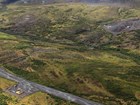
Visitors flock to places like Glacier Bay to experience a connection with the landscape. Early visitors to the state also discovered gold and other resources, development of these which helped shape modern Alaska. A careful balance between conservation and resource development continues today. Visual mapping allows land managers, visitors, and the public to more easily understand the type, scale, and scope of resource development adjacent to parks. Read more
-
Article 7: What Scenarios May Unfold for North Slope Development and Related Science Needs?

The North Slope Science Initiative (NSSI) is leading an effort to use scenarios to envision the plausible future story of development on Alaska’s North Slope and the adjacent waters of the Beaufort and Chukchi Seas (Figure 1). Scenarios will help NSSI to identify the appropriate science strategies to invest in now to better inform management decisions in the future. Read more
-
Article 8: Reclamation of Boreal Forest Ecosystems Following Oil-Sands Mining
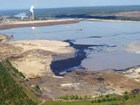
Open-pit mining of oil sands in the boreal forest of northern Alberta began in 1967. In the past five decades operational practices in reclamation have adapted to changes in technology and regulatory requirements. Read more
-
Article 9: Environmental Baseline and Mining in Remote Alaska
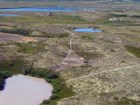
In order for any body of water to receive some protections under Alaska's Anadromous Fish Act (AFA), it must be documented and studied. Fisheries stakeholderes expressed concern about mine claims near Lake Clark = although three large rivers support salmon in the claims, few tributaries feeding them had ever been surveyed for fish, meaning they had no protection. Therefore, in 2008 a study began on many streams in and near mine claims. Read more
-
Article 10: Long-term Risk of Tailings Dam Failure
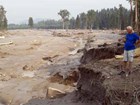
Large tailings dams, which are built to contain mining waste and are among the largest dams and structures in the world, must stand in perpetuity. Experience shows that a catastrophic release of tailings can lead to long-term environmental damage with huge cleanup costs. The failure rate of tailings dams is also significantly higher than that of water supply reservoir dams. Read more
-
Article 11: Abandoned Mine Lands in Alaska National Parks—An Overview
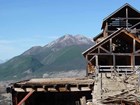
From the thousands of mining claims that existed at when Congress created most national parks in Alaska, around 750 still remain. These are mainly abandoned sites and features, in various stages of disrepair and failure. Since 1981, the NPS has worked to quantify the number and type of hazards posed by these sites and has pursued a variety of solutions to mitigate the issues, such as visitor safety hazards, presented by relic mining features. Read more
-
Article 12: State of Alaska’s Abandoned Mine Lands Program
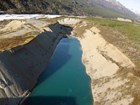
In May of 1983 the State of Alaska took primacy of the Abandoned Mine Lands (AML) program and for the past 31 years has been working in all corners of the state to reclaim abandoned mines. As of 2015, 88 AML projects have been completed at a cost of $23.77 million. The majority of the remaining coal related hazards are dangerous highwalls (19,750 feet/6,020 meters) and surface burning (10 acres/4 hectares). Read more
